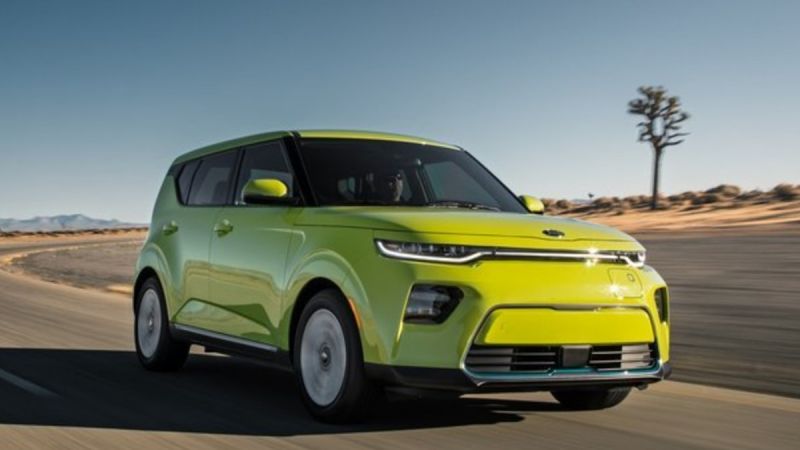Electric vehicles are here to stay and gaining greater market share every year. Most legacy automakers understand this and have moved their electrification plans forward accordingly.
Toyota announced an accelerated electric lineup to be in place by 2023, for example, and BMW set the same earlier objective last week. Both of the manufacturers previously cited 2025 as their target.
Of all these established automakers chasing Tesla’s huge lead in electric vehicles, Kia holds an interesting distinction that could help it move to lead the “best of the rest.” In fact, the public has started to learn to love the Kia Soul EV in this 2015 review.
The 2020 Kia Soul EV Appeals to a Different Buyer
The Kia Soul brand has always been about fun. From ads featuring adorable animals partying into the night to quirky color schemes and entry music, Kia positions this vehicle towards a younger generation of buyer.
Advertising a model to a specific demographic is nothing new, but when taken in the context of the limited long-range options available to EV buyers, the 2020 Kia Soul EV becomes especially important. In car buying decision making buying vs leasing question always comes up. If you are faced with that decision don't miss "Buy or Lease an Electric Car: Kia Soul EV's Case."
Assuming a Tesla is either not in the buyer’s budget or preferred vehicle type, the list of electric vehicles with a 60 kWh or larger battery pack is currently quite small. Extend that category to individual brands with multiple long-range all-electric options and only Tesla remains.
By offering the 2020 Kia Soul EV alongside the Kia Niro EV, which is often described in such unevocative terms “sensible” and “family-friendly,” the South Korean automaker is showing that it values alternate ends of the EV buying market.
The Soul EV has the same fundamental qualities that attract new EV buyers to the Niro EV – large battery pack, long range, great performance and ample storage – but it’s at the other end of the spectrum in terms of styling.
Party mode lights and funky color schemes aren’t going to be top of the list for those drivers with two kids and a dog, but they add a sense of uniqueness for buyers more concerned with atmosphere and aesthetics.
With two highly capable electric vehicles appealing to very different types of buyer, Kia starts to set itself apart from competitors.
Kia’s EV Options Will Be More Affordable
In terms of pricing and consumer interest in the affordable EV segment, Kia has everything going for it.
For starters, the South Korean automaker has plenty of room left to leverage the US federal tax credit to keep purchase prices and monthly lease fees down.
The most recent estimates give Kia more than 175,000 electric vehicle sales before they trigger the phase-out, which would ideally prompt a major sales push to get the 2020 Kia Soul EV out of the adverts and onto US driveways.
Kia isn’t a luxury brand, so its models attract buyers at the more affordable end of the market. When combined with local incentives and the full federal tax credit, a brand new 2020 Kia Soul EV is going to look like a great buy when compared to a 2019 Chevy Bolt EV or a 2019 Nissan Leaf Plus.
On the subject of Kia’s electric line-up, here’s a new charging issue impacting Kia Niro EV drivers this summer.
Mission Possible: An EV Option for Everyone
Now that so many established automakers have at least one viable BEV, the next objective is clearly to offer a variety of full electric options. These models will need to hit different price points, vehicle categories, and be attractive to different types of buyer.
Car buyers often demonstrate the kind of brand loyalty that other product categories would love to have. Unfortunately, having only one long-range electric model to choose from means that many buyers jump from brand to brand.
In the current scenario, the company with the newest EV typically wins because it has the latest technology, such as faster charging and slightly greater range.
If Kia can continue to build on the base provided by the Niro EV and the 2020 Kia Soul EV, the fact that it still has ample room to exploit the federal tax credit could make Kia the first brand that buyers visit when they consider purchasing a non-Tesla EV.
Unfortunately, given that both Kia and its South Korean sibling Hyundai are still only releasing their exciting new electric models in states that actively promote zero-emission vehicles, it seems unlikely that either will realize the full potential of those cars.
Nonetheless, having two well-reviewed and highly sought-after EVs that will be available around the $30,000 mark in key markets around the United States is a step in the right direction.
It puts Kia in a good position to lure in buyers who aren’t enticed by Tesla, with the 2020 Kia Soul EV likely to play an important role in electric vehicle adoption as we enter the next decade.
Please watch how this Kia Soul EV is off-roading in snow with stock tires click to subscribe to Torque News Youtube Channel for Daily EV and Automotive News Analysis.
Steve Birkett is an electric vehicle advocate at Plug & Play EV. You can follow him on Twitter at @Plugandplayev, Instagram and Youtube at Plugandplayev Channel to send him EV news tips.












